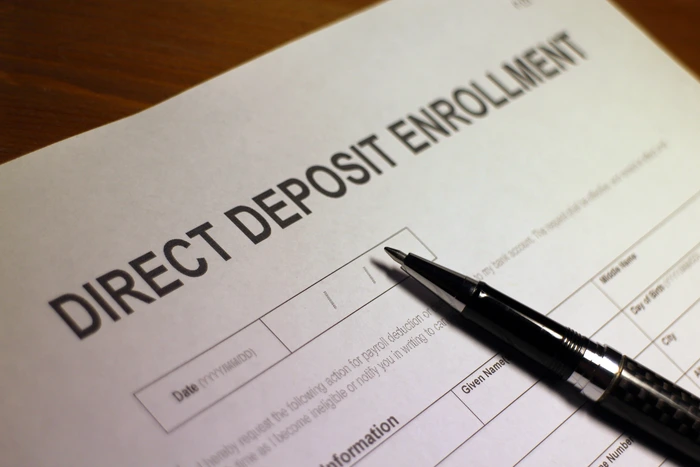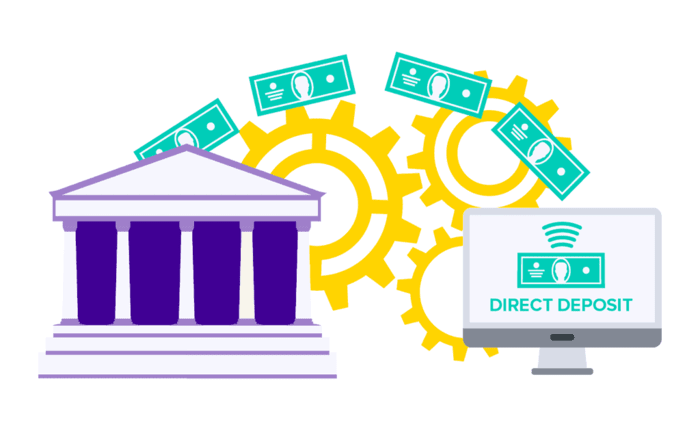Direct deposit is convenient for employees to receive their paychecks through electronic funds. It eliminates the need to go out of their way to cash a physical check.
Employers send instructions to a direct deposit provider to set up payroll deposits. The direct deposit provider then sends these to the network and each employee’s bank.
Easy to Set Up
Direct deposit is one of the most popular methods for paying employees because it reduces processing costs and eliminates paper checks. Employees fill out a natural deposit authorization form that authorizes their employer to send their paycheck directly to their personal bank account on specific paydays. The funds are securely transmitted to their banks, a financial network that transfers money between banks. Once received, the funds are automatically released into their accounts on payday as if they had deposited a check. Some companies also let their employees choose to have part of their pay deposited into savings or other charges, making it easy for them to save money and avoid spending their entire paycheck every week.
Setting up a direct deposit system is relatively easy, and most of the information you need will already be on file with your payroll provider. To get started, your business must provide its account number, sign a consent to receive electronic transactions, and possibly submit financial documents to demonstrate that it has enough money to cover regular payrolls. Then, if your provider offers it, your employees must provide their bank account numbers to receive their first automatic payments.
Easy to Manage
Using direct deposit eliminates the cost and hassle of printing paychecks for employees. However, there are a few fees associated with direct deposit that businesses should be aware of. These include the initial setup costs and monthly or pre-pay cycle service fees. In addition, banks can also impose minimum account balances or transaction fees. These fees are usually minor, and the efficiencies gained in payroll processing often make them worthwhile.
After an employee signs up for a direct deposit, the information is input into your business’s accounting software (or payroll provider). Then, a file sends the money to each bank in the system. Once the money reaches the employee’s bank, it’s deposited into their designated account(s).
When setting up your direct deposit schedule, you should account for your payroll cycle and any holidays or weekends. Then you can plan your payroll accordingly and build a deposit schedule with your provider to ensure your team is paid on time without the stress of coming into the office or waiting for a check in the mail. It would help to establish cutoff dates for employee time cards or hours to give your team plenty of time to review and process payroll before submission for deposit. You can use an all-in-one HR and Payroll software that includes a secure Employee self-service portal to streamline this process.
Easy to Maintain
When you set up direct deposit, you’re making it much easier for your employees to get paid every time. They won’t have to worry about a lost or stolen paycheck, nor will they have to worry about taking time off from work to cash a check. Using direct deposit also helps them keep track of their finances and makes it easier to budget and plan.
In terms of the employer, it makes things much easier as well. Instead of relying on physical checks, you can use your payroll software to process the payments that need to be made. However, it’s important to remember that it can take up to two business days for the banks to process direct deposits and may cost more than with paper checks.
The best way to determine the exact costs is to talk with your provider or HR and payroll management team. They can walk you through your options and help you choose the right solution for your business. Whether that’s the bank that manages your business’s account, an integrated payroll and payroll services provider, or another option, you should be able to find a service that offers transparent and competitive pricing. Sometimes, the providers may even include the direct deposit cost as part of their standard package.
Easy to Track
Direct deposit allows you to electronically route payroll amounts directly into employees’ personal bank accounts, eliminating the need for them to cash physical paychecks after payday. This process may involve employer fees, such as per-deposit or account maintenance fees. Still, these costs are usually minimal compared to those associated with cutting and mailing paper checks.
In addition to eliminating the cost and hassle of printing and distributing payroll checks, direct deposit also makes it easier to track employee pay data, which is essential for keeping up with payroll taxes and other important regulatory compliance requirements. In addition, direct deposit is often more secure than traditional paper checks, as it eliminates the possibility of theft or fraud involving mailbox fishing (fraudsters stealing checks from employees’ mailboxes), which has become an increasingly common and costly problem.
Using direct deposit also gives you the flexibility to process payroll anytime. This makes it a convenient option for employees who work from home or are on the go, and it also allows you to make sure you’re meeting deadlines set by your payroll service or bank to receive funds before payday. If a payroll error occurs, it’s easy to fix with the help of your direct deposit provider. The provider will send a corrected batch to the network, which will credit your employees’ bank accounts and debit your company’s account accordingly.


